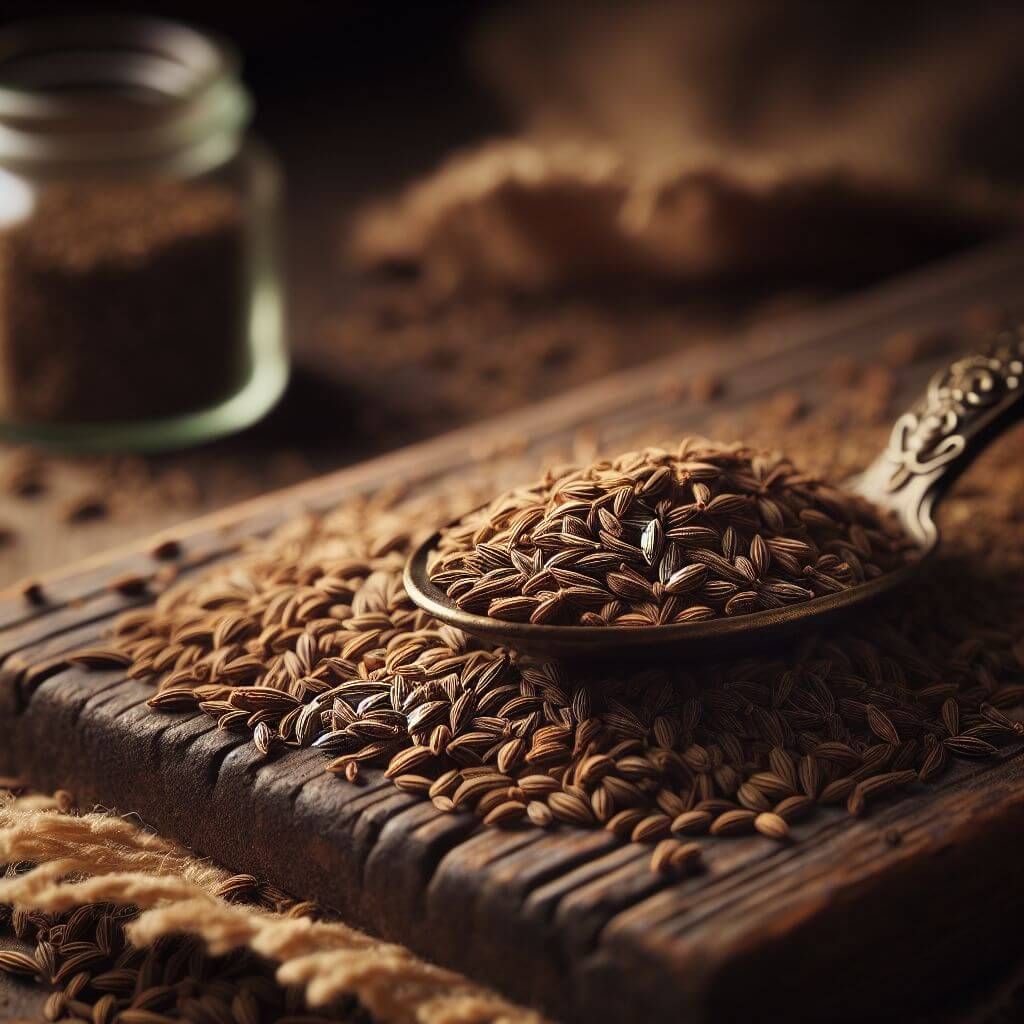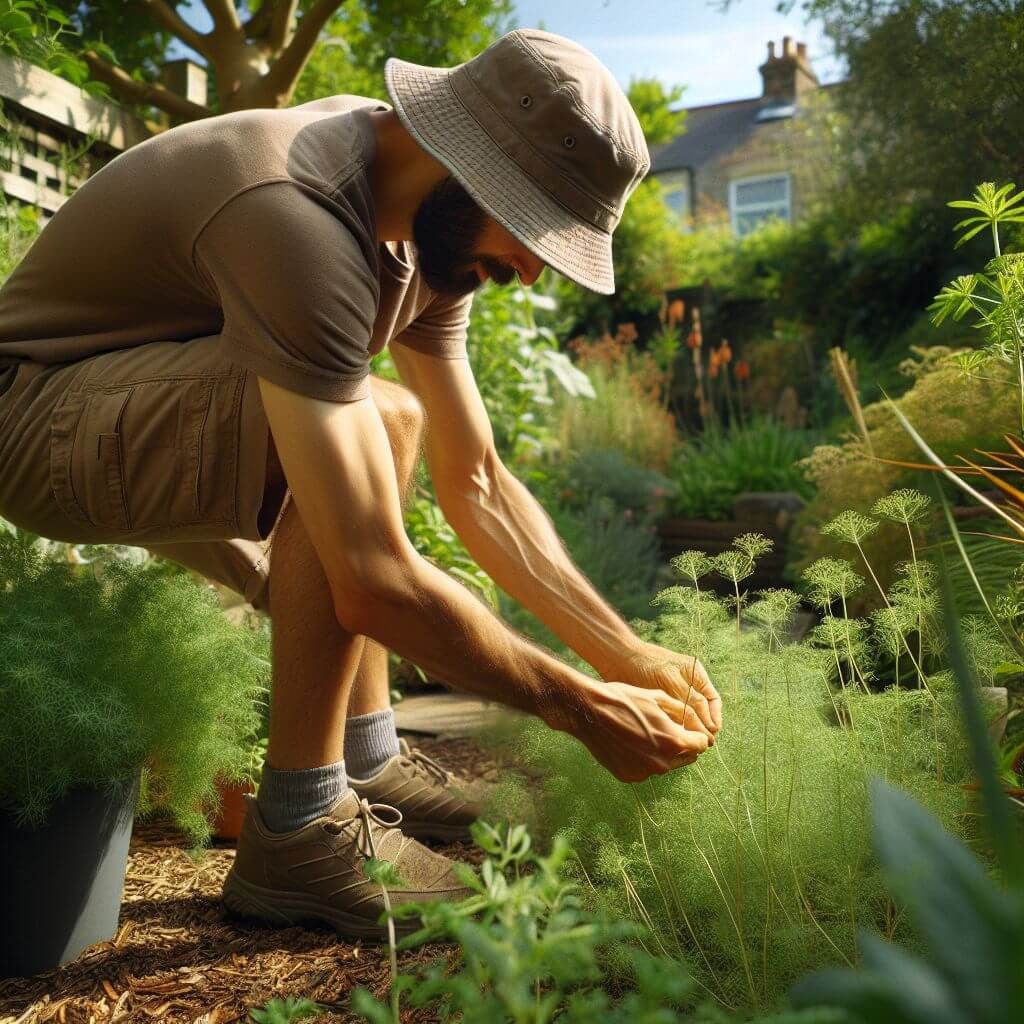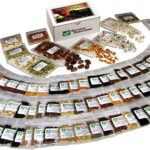
Key Takeaways
Cumin VNS (variety not specified) is a resilient spice that thrives in various conditions, making it perfect for survival gardens.
It requires well-draining, loamy soil with a pH of 6.0 to 7.0 and full sun to grow best.
Regular watering and pest management are essential for a healthy cumin crop.
Cumin not only enhances culinary dishes but also offers significant health benefits.
By saving seeds from your cumin plants, you contribute to sustainable gardening and ensure a future supply.
When it comes to building a survival garden, you want to make sure every plant counts. That’s where cumin VNS comes in. It’s not just a spice—it’s a powerhouse plant that can withstand tough conditions and still give you a bountiful harvest. So, let’s roll up our sleeves and dig into the world of cumin, the spice that every survival garden needs.
Cumin VNS Overview
Cumin VNS, or cumin variety not specified, refers to the common cumin plant (Cuminum cyminum) that you can grow without needing to know the specific strain. It’s a forgiving herb that’s perfect for beginners and seasoned gardeners alike. Cumin plants are small, with delicate white or pink flowers, and the seeds that follow are what we’re after. These tiny seeds pack a punch of flavor and are used worldwide in a myriad of dishes.
Why Cumin is Essential for Survival Gardens
There are several reasons why cumin should take pride of place in your survival garden:
Resilience: Cumin is drought-tolerant once established, making it suitable for various climates.
Health Benefits: It’s rich in iron and has been used in traditional medicine for digestive issues.
Food Preservation: Cumin’s antibacterial properties can help in preserving food, an essential trait for long-term survival.
Seed Saving: You can easily save cumin seeds, ensuring you have a continuous supply for future planting.
Planting Your Powerhouse Spice

Starting a cumin plant in your garden is simple. First, you’ll need cumin seeds, which you can find at reputable online stores like Survival Essentials. With a packet of these, you’re ready to turn a patch of soil into a spice haven.
Choosing the Best Soil for Cumin VNS
The right soil is crucial for growing cumin. It prefers well-draining, loamy soil with a neutral to slightly acidic pH. If your soil is heavy clay or sand, you can amend it with compost to improve its texture and fertility. Remember, cumin doesn’t like to sit in wet soil, so drainage is key.
Now, let’s get those seeds in the ground:
Wait until after the last frost date to sow your cumin seeds directly into the garden.
Plant the seeds 1/4 inch deep and space them about 4 inches apart.
Water the soil gently to moisten it without disturbing the seeds.
Keep the soil consistently moist until the seeds germinate, which should take about one to two weeks. As the plants grow, thin them out so they’re about 8 inches apart. This gives each plant enough room to mature.
Most importantly, patience is key with cumin. It’s a bit of a slow grower, taking about 100 days to mature, but it’s well worth the wait. In the meantime, you can enjoy watching your cumin plants develop and imagine all the delicious dishes they’ll help you create.
Optimal Climate and Sunlight for Thriving Cumin Plants
Cumin loves the sun and warmth. It thrives in temperatures between 68°F and 86°F, so it’s perfect for growing in the spring and summer months. Make sure you plant your cumin in a spot that gets at least 6-8 hours of sunlight a day. If you live in a cooler climate, you can start the seeds indoors about 8 weeks before the last frost date and transplant them outside once the weather warms up.
Because cumin is so adaptable, you can even grow it in containers on a sunny balcony or patio. Just make sure the pots have good drainage holes, and you’re all set. This way, you can move your cumin plants around to catch the sunniest spots, which they’ll love you for.
Remember, while cumin can handle a bit of a chill, it won’t survive a hard frost. If an unexpected cold snap is in the forecast, be ready to protect your plants with a cover overnight.
So, why not add cumin VNS to your survival garden today? Not only will it spice up your meals, but it’ll also bolster your self-reliance, ensuring you have a steady supply of this versatile and beneficial herb.
Caring for Your Cumin Crop
Once your cumin seedlings have taken root and started to grow, they’ll need some attention and care to ensure they flourish. A thriving cumin plant can be a generous contributor to your survival garden, offering seeds that will enhance your meals with flavor and nutrition.
Watering Techniques for Robust Growth
Cumin plants don’t like to be soaked, but they do need consistent moisture, especially during the seedling stage and dry spells. Aim for a deep watering that allows moisture to reach the roots, encouraging them to grow downwards and establish a strong foundation for the plant. Once established, cumin’s watering needs reduce, and you’ll only need to water it if you notice the soil is dry to the touch.
A good rule of thumb is to water your cumin plants early in the morning. This gives the plants plenty of time to absorb the water before the heat of the day, and helps to reduce the risk of fungal diseases that can occur if the foliage stays wet overnight.
Also, consider using a mulch layer around your plants. Mulch helps retain soil moisture and keeps the roots cool, which is something cumin plants appreciate in the heat of summer.
Example: If you’re using a watering can, aim to water at the base of the plant rather than over the leaves to minimize moisture on the foliage and prevent diseases.
Combatting Common Pests and Diseases
Fortunately, cumin isn’t a big magnet for pests, but you should still keep an eye out for aphids and spider mites. These tiny insects can be controlled by spraying a strong jet of water to knock them off the plant or using an organic insecticidal soap.
When it comes to diseases, the best prevention is proper plant spacing and watering techniques. Good air circulation around your plants will discourage fungal growth. If you do spot signs of disease, such as powdery mildew or leaf spot, remove the affected parts and dispose of them away from your garden.
Harvesting and Utilizing Your Homegrown Cumin

After months of nurturing, it’s time to reap the rewards of your labor. Cumin is ready to harvest when the plant has flowered and the seed heads have begun to brown. It’s a sign that the seeds are maturing and are almost ready to be collected.
Knowing When and How to Harvest Cumin
Harvesting cumin is all about timing. Wait too long, and the seeds might fall to the ground. Harvest too early, and they won’t have developed their full flavor. The perfect time is when the seeds are brown but the plant hasn’t completely dried out.
To harvest, cut the seed heads from the plant and place them in a paper bag. Hang the bag in a dry, well-ventilated area for a few days to a week. Once the seed heads have dried, shake the bag or rub the heads between your hands to release the seeds.
From Garden to Kitchen: Using Cumin in Recipes
Now that you’ve got your hands on homegrown cumin seeds, it’s time to put them to use. Cumin’s earthy, warm flavor makes it a staple in many spice blends and cuisines around the world. You can use it in:
Homemade curry powders
Chili and taco seasoning
Marinades for meats and vegetables
Soups and stews for an added depth of flavor
Don’t forget, you can also toast the seeds in a dry skillet before grinding them to release more of their aromatic oils, making your dishes even more flavorful. For more tips on enhancing your survival garden, check out our propagation station techniques.
Example: Try adding a teaspoon of ground cumin to your next batch of hummus for an extra layer of flavor that pairs wonderfully with the creamy chickpeas and tahini.
Health Benefits of Incorporating Cumin into Your Diet
Cumin isn’t just a flavorful addition to your dishes; it’s also packed with health benefits. By incorporating cumin into your diet, you’re giving your body a boost of nutrients that can contribute to overall wellness.
Nutritional Profile of Cumin
Cumin seeds are a good source of iron, which is essential for creating red blood cells and keeping your energy levels up. They also contain antioxidants that help fight inflammation and may reduce the risk of certain diseases. Additionally, cumin has been found to aid digestion and improve blood sugar control. For those interested in incorporating cumin into their survival gardens, understanding its health benefits is crucial.
With every teaspoon of cumin, you’re enhancing your meals not only with taste but also with a dose of health-promoting properties. It’s a win-win situation for any gardener looking to be more self-reliant and health-conscious.
Cumin’s Role in Traditional Medicine
Long before cumin found its way into the spice racks of modern kitchens, it was a staple in traditional medicine cabinets. Its use dates back to ancient times where it was valued not only for its flavor but also for its medicinal properties. Cumin seeds were traditionally used to treat a variety of ailments, particularly digestive issues such as bloating, gas, and indigestion. The seeds are thought to stimulate the production of digestive enzymes, which can help improve gut health and nutrient absorption.
FAQ
What Makes Cumin VNS Different from Regular Cumin?
Cumin VNS refers to a variety of cumin that is not specified, meaning it’s the common cumin plant but not a particular strain. This makes it ideal for survival gardens because it’s generally hardy and adaptable. Regular cumin might refer to specific cultivated varieties that have been bred for certain characteristics like flavor intensity or seed size. However, for the purpose of a survival garden, cumin VNS is more than sufficient and offers great versatility and resilience.
How Long Does Cumin Take to Grow?
Cumin is a bit of a patient gardener’s plant. From the time you sow the seeds, it typically takes about 3 to 4 months for cumin to mature and be ready for harvest. This timeline can be affected by growing conditions such as temperature, sunlight, and soil quality. But the wait is definitely worth it when you consider the flavor and health benefits you’ll reap from your homegrown cumin.
Can Cumin VNS Survive Winter Conditions?
Cumin plants are not frost-tolerant and will not survive harsh winter conditions outdoors. However, you can grow cumin in pots and bring them indoors during the colder months. If you live in an area with mild winters, you might be able to cover your cumin plants and provide some protection from the cold, but it’s not a guarantee that they will survive a freeze.
What Are the Best Companion Plants for Cumin VNS?
Cumin grows well alongside most vegetables and herbs, but there are a few that can be particularly beneficial as companions. These include:
Tomatoes, which can provide shade for the cumin during the hottest part of the day.
Chili peppers, which share similar growing conditions.
Herbs like tarragon and chamomile, which can help repel pests.
Just be sure to avoid planting cumin near fennel, as they can cross-pollinate and potentially affect the growth and flavor of both plants.
How to Store Homegrown Cumin Seeds for Future Planting?
Storing cumin seeds is a simple process that ensures you’ll have seeds for planting in the next season. After harvesting and drying the seeds, follow these steps:
Remove any chaff or debris from the seeds.
Place the seeds in an airtight container, such as a jar with a tight-fitting lid or a sealable plastic bag.
Store the container in a cool, dark place, like a pantry or cupboard.
Make sure to label the container with the date, so you know how old the seeds are.
Properly stored, cumin seeds can remain viable for several years, ensuring that your survival garden will continue to flourish season after season.
As we’ve explored the ins and outs of growing cumin VNS in your survival garden, it’s clear that this spice powerhouse is a must-have for any gardener aiming for self-reliance. It’s not just about the robust flavor it adds to your meals—it’s about the resilience, health benefits, and the sense of security knowing you can produce your own spices year after year. So, take the leap and plant cumin VNS in your garden; it’s a small step towards a more sustainable and self-sufficient lifestyle.
Remember, gardening is more than just a hobby; it’s a way of life that connects us to the earth and to our own survival instincts. By growing your own cumin and other essential herbs and vegetables, you’re taking control of your food supply and ensuring that no matter what happens, you have the skills and resources to thrive. So, why wait? Head over to Survival Essentials and get started on your cumin VNS journey today. Your future self will thank you for it.







Leave a Reply